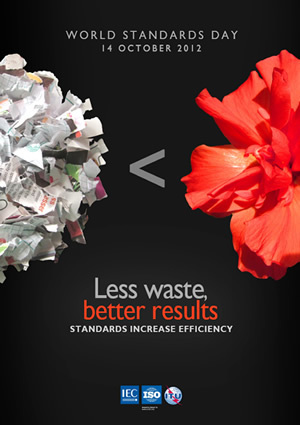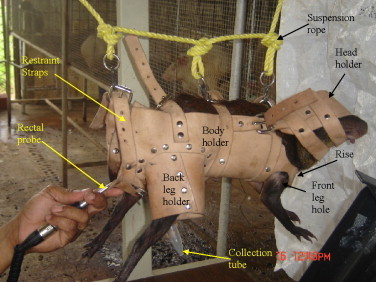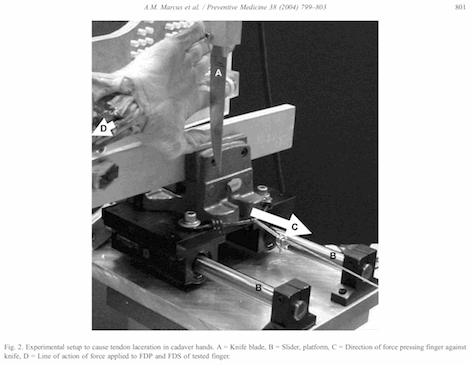Marc Abrahams's Blog, page 543
October 11, 2012
Giving Us Reasons To Smile (teeth + electricity)
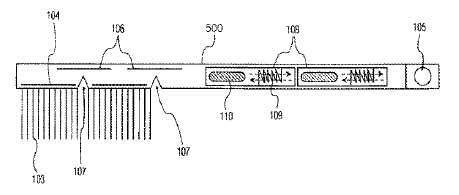 Schemes for ‘harvesting’ energy range from electricity-generating dancefloors to knee dynamos. But there is now a new option – patented last month by the Colgate-Palmolive Company (New York), the ‘Oral care implement with mechanical energy harvesting‘. During use, the invention employs piezoelectric devices to generate electricity from the stresses-and-strains caused by bending the toothbrush head and/or bristles. Thus the brush can not only provide current suitable to power onboard circuitry and LEDs etc. it could also (theoretically at least) offload its accumulated energy back into a national electrical grid – thereby reducing one’s utility bill. Perhaps it could be called a Reverse Electric Toothbrush?
Schemes for ‘harvesting’ energy range from electricity-generating dancefloors to knee dynamos. But there is now a new option – patented last month by the Colgate-Palmolive Company (New York), the ‘Oral care implement with mechanical energy harvesting‘. During use, the invention employs piezoelectric devices to generate electricity from the stresses-and-strains caused by bending the toothbrush head and/or bristles. Thus the brush can not only provide current suitable to power onboard circuitry and LEDs etc. it could also (theoretically at least) offload its accumulated energy back into a national electrical grid – thereby reducing one’s utility bill. Perhaps it could be called a Reverse Electric Toothbrush?
Also see: Perception of Electric Toothbrushes (Improbable Research, Dec. 2010)

Today Is World Standards Day (in the USA but not elsewhere)
Today, October 11, is World Standards Day 2012 in the United States of America. The American National Standards Institute (ANSI) is celebrating today with a reception, exhibition, dinner and ceremony at the Fairmont Hotel in Washington, DC, beginning at 5:30 pm.
October 14, is World Standards Day 2012 in the rest of the world (except Canada, which celebrates World Standards day this year on October 12.).
The poster shown here is the winning entry in a “competition for World Standards Day 2012 (14 October), which attracted almost 300 entries and over 4 000 votes”:

Stimulated Stages of Penile Erection in an Edible Rodent
 What’s up with the agouti [pictured here, in a San Diego Zoo photo]? Three proven males show what, according to this new study:
What’s up with the agouti [pictured here, in a San Diego Zoo photo]? Three proven males show what, according to this new study:
“Anatomical Stages of Penile Erection in the Agouti (Dasyprocta leporina) Induced by Electro-Ejaculation,” W.M. Mollineau, T. Sampson, A.O. Adogwa and G.W. Garcia, Anatomia Histologia Embyologia, vol. 41, 2012, pp. 392-4. The authors, at the The University of the West Indies, St Augustine, Trinidad and Tobago, report:
“The reproductive system of the male agouti (Dasyprocta leporina), a Neo-Tropical edible rodent, is documented in only a few publications…. The objective of this study was to describe the various anatomical features of the agouti penis occurring during penile erection induced by electro-ejaculation…. Three proven male agoutis were stimulated by electroejaculation during this study…
The photo above is from an earlier publication by three of the same authors: “A preliminary technique for electro-ejaculation of agouti (Dasyprocta leporina)“, W.M. Mollineau, A.O. Adogwa, G.W. Garcia, Animal Reproduction Science, vol. 108, nos. 1–2, October 2008, pp. 92–7.
(Thanks to investigator Jan Prochel for bringing this to our attention.)
BONUS: An enchanted learning look at the agouti
BONUS PHILOSOPHICAL DISCUSSION QUESTION: What is a “proven male agouti”?

October 10, 2012
The scientist who says he rose up against crime
Prof John Hagelin‘s decision not to run against Mitt Romney and Barack Obama left this year’s US presidential race without a major candidate who is a scientist and who acknowledges – publicly – his ability to both counteract gravity and prevent crime.
Two decades ago, Hagelin and a team of fellow scientists performed a bold experiment. Their aim was to drastically reduce the amount of violent crime in Washington DC – a metropolis then noted for its high incidence of murder, rape and robbery. The Hagelin method was to systematically blanket the city with mental emanations from transcendental meditation and yogic flying.
Hagelin is, by his own admission, a remarkable man. A professor of physics and director of the Institute of Science, Technology and Public Policy at the Maharishi University of Management, in Fairfield, Iowa, he is a practised expert in quantum physics, transcendental meditation and yogic flying…
So begins this week’s Improbable Research column in The Guardian.

October 9, 2012
Romanian university students & their Transylvanian fruits
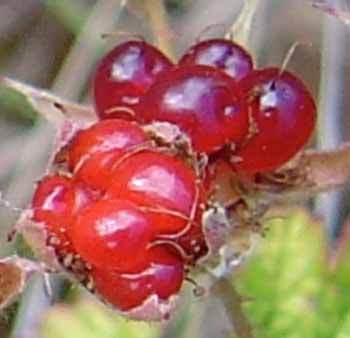 The thorny question of which types of forest fruits are preferred by Romanian university students has been largely resolved.
The thorny question of which types of forest fruits are preferred by Romanian university students has been largely resolved.
“Students eat a large variety of berries, the most commonly consumed being the raspberries, walnuts, hazelnuts, blackberries, wild strawberries, blueberries, which are the most easy to find in the forests of Transylvania or in the surrounding areas.”
The conclusion was reached by Dr. Adriana MAN, and Professor Dr. Sabina FUNAR from the University of Agricultural Sciences and Veterinary Medicine, Faculty of Horticulture, Cluj-Napoca, Romania, who asked 79 students 27 sets of questions regarding their forest fruit preferences. Their research paper, ‘University Students’ Forest Fruits Preferences‘ is published in the Bulletin of University of Agricultural Sciences and Veterinary Medicine Cluj-Napoca. Horticulture, Vol 68, No 2 (2011)
Note: They weren’t all that keen on wild cherries, and their least preferred forest fruit was the sea-buckthorn.

Soft Soft Research: affective responses to perfumed fabric softeners
This Week’s Press-Release-Trumpeted Study of the Week is:
“Seeing, smelling, feeling! Is there an influence of color on subjective affective responses to perfumed fabric softeners?” Christelle Porcherot, Sylvain Delplanque, Nadine Gaudreau, Isabelle Cayeux, Food Quality and Preference, epub 6 July 2012. The authors, at Firmenich, in Geneva, Switzerland and at the University of Geneva, explain:
” The aim of this study was to investigate the influence of color on the verbal measurement of emotions in response to different perfumes in fabric softeners, the hypothesis being that color-perfume congruent pairs will induce enhanced positive emotional responses. In a first experiment, 102 participants were asked to report their feelings for nine perfumed fabric softeners, which were perfumed with one of three perfume variants and presented as one of three color variants…. he optimization of color-perfume pairing did not result in a significant increase of the subjective affective response. More generally, this study underlines the predominant role of perfume in the emotional response and a more limited influence of color.”

October 8, 2012
Hands-On Experiment: The Safety of Pumpkin Carving Tools
A hands-on experiment, or rather, an experiment on hands,tried to determine the safety of pumpkin carving tools. Details are in the study:
“The Safety of Pumpkin Carving Tools,” Alexander M. Marcus, Jason K. Green, and Frederick W. Werner, Preventive Medicine, vol. 38, 2004, pp. 799–803. (Thanks to investigator Kurt Verkest for bringing this to our attention.) The authors, at Orthopedic Associates of Central Jersey, Edison, New Jersey, and at State University of New York Upstate Medical University, Syracuse, report:
Methods. Two pumpkin carving knives were compared to a serrated and a plain kitchen knife. The forces required to cut and pierce a pumpkin were determined and then applied by a servo-hydraulic machine to each knife placed against cadaver hands in a manner designed to either lacerate Zone 2 of the finger (six tests for each knife) or to puncture the hand. Inspection and dissection determined the extent of injury.
Results. The pumpkin knives produced some injuries, however, they were fewer and less severe than those caused by the kitchen knives.

October 7, 2012
Nonverbal Givens (Lawns and Yawns)
 One of the key (B-Team) advisors to Sandia Lab’s report into Expert Judgement on Markers to Deter Inadvertent Human Intrusion into the Waste Isolation Pilot Plant [see : Atomic Berms, previous Improbable article] was David B. Givens, Ph.D., now Director of the Center for Nonverbal Studies, and lecturer at the School of Professional Studies at Gonzaga University, Spokane, Washington, US.
One of the key (B-Team) advisors to Sandia Lab’s report into Expert Judgement on Markers to Deter Inadvertent Human Intrusion into the Waste Isolation Pilot Plant [see : Atomic Berms, previous Improbable article] was David B. Givens, Ph.D., now Director of the Center for Nonverbal Studies, and lecturer at the School of Professional Studies at Gonzaga University, Spokane, Washington, US.
Dr. Givens is an expert in non-verbal communication, and has authored The Nonverbal Dictionary of Gestures, Signs, and Body Language Cues. The dictionary was available online, until it was “… abruptly taken down by AOL in late 2008.” It’s now been comprehensively rebuilt – here are some links to example entries – with supplementary material that may be of particular interest to Improbable readers.
• Lawn Display “A plot of carefully groomed grass, and any of several decorative artifacts (e.g., white pickets or plastic pink flamingos) placed upon its surface.”
Note: Don Featherstone of Fitchburg, Massachusetts, was awarded the 1996 Ig Nobel Art prize for his ornamentally evolutionary invention, the plastic pink flamingo.
• The Yawn “A socially contagious gaping behavior, often difficult to suppress.”
Note: Anna Wilkinson (of the UK), Natalie Sebanz (of THE NETHERLANDS, HUNGARY, and AUSTRIA), Isabella Mandl (of AUSTRIA) and Ludwig Huber (of AUSTRIA) won the 2011 Ig Nobel physiology prize for their study “No Evidence of Contagious Yawning in the Red-Footed Tortoise.”
• Coca-Cola® “A cola’s sugary taste reconnects us with our fruit-eating primate past. When Eocene-primate ancestors took to the trees ca. 50 m.y.a., they supplemented a basically insect diet with ripened fruit. Drinking a Coke, we are briefly absorbed in the present moment, i.e., in the animal sense of the now.”
Note: The 2008 Ig Nobel chemistry prize was awaded to Sharee A. Umpierre of the University of Puerto Rico, Joseph A. Hill of The Fertility Centers of New England (USA), Deborah J. Anderson of Boston University School of Medicine and Harvard Medical School (USA), for discovering that Coca-Cola is an effective spermicide, and to Chuang-Ye Hong of Taipei Medical University (Taiwan), C.C. Shieh, P. Wu, and B.N. Chiang (all of Taiwan) for discovering that it is not.
• Existential Crunch “We crave the crunchiness of nuts, and extend the properties of crunching to crackers and corn chips, which are served crisp.”
Note: The 2008 Ig Nobel prize for nutrition was awarded to Massimiliano Zampini of the University of Trento, Italy and Charles Spence of Oxford University, UK, won the IgNobel 2008 Nutrition prize for electronically modifying the sound of a potato chip to make the person chewing the chip believe it to be crisper and fresher than it really is.
Also well worth investigating :
• Blue Jeans “According to NASA, the mean buttock circumference in men is 39.2, and in women 37.4, inches. Though women have fuller, rounder bottoms, derrieres of both sexes are featured in jeans ads”
• High Heels “Nonverbally, high heels stand wearers precariously up on their tiptoes, thus shifting the body’s center of gravity forward, and causing a compensatory forward lean. The derri?–already prominent by primate standards–protrudes an additional 25%” (Also see: Heel Thyself. Do shoes cause schizophrenia?)
• Antigravity Sign “One of several nonverbal cues derived from body movements designed to counteract the pull of gravity.”
• Neck Dimples “The neck dimple is a frail part of our anatomy, revealed by upright posture and hairless skin. An expressive body part, its fragility is either left uncovered for display, or concealed by neckwear.”

October 6, 2012
Hexanitrohexaazaisowurtzitane, at first glance
Derek Lowe writes (in In the Pipeline) about the ungracefully-named hexanitrohexaazaisowurtzitane:
Let’s start with the name. Quite a mouthful, isn’t it? Believe me, that one’s pretty chewy even for experienced organic chemists. We see lots of more complicated nomenclature, of course, but this one some features some speed bumps, that make you go back to make sure that you’re reading it correctly. I’ll take you through my own thoughts as an example.
You skip to the end in chemical names – Mark Twain would have felt about them the same way he felt about the German language. But this brings me up short, because very few chemists could walk up to the board and draw an isowurtzitane. And I am not among their number. I have a vague picture of these “wurtz” compounds being funky three-dimensional cage structures, and that much only from having probably read too many photochemistry papers over the years. So the only thing that “isowurtzitane” calls to mind is some complicated framework of fused rings, looking like one of those wire sculptures that unexpectedly fold up flat when you pull on them.
Moving on out, as you do in a systematic name, I see that this is a hexaaza variation, which makes the picture a bit fuzzier. That’s a lot of nitrogens substituted for carbons, and the first thought is that this must be some weirdo condensation product of ammonia, some aldehyde, and who knows what. You can get some pretty funny-looking structures that way, like hexamethylenetetramine (which I’ve actually used a couple of times). I don’t know where those nitrogens are, I think to myself, but I’ll bet that’s how they got there, because any other pattern would be a synthetic nightmare. So far, so good. But now comes the unexpected habanero.
Hexanitro? Say what? I’d call for all the chemists who’ve ever worked with a hexanitro compound to raise their hands, but that might be assuming too much about the limb-to-chemist ratio. Nitro groups, as even people who’ve never taken a chemistry class know, can lead to firey booms, and putting six of them on one molecule can onlylead to such….

October 5, 2012
The further adventures of Dr. D. Doctor
Investigator Ron Josephson alerts us to the existence of Dr. D. Doctor, also known as Daniel H. Doctor, Ph.D.
Dr. Doctor is a geologist with the U.S. Geological Survey, where he is a Ph.D and a postdoc.

Marc Abrahams's Blog
- Marc Abrahams's profile
- 14 followers




